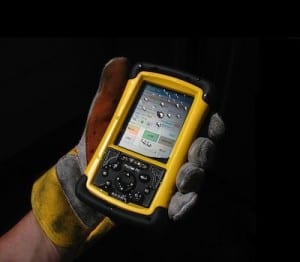For many years, field service companies had limited hardware options for their mobile deployments. There were rugged handheld devices or larger (and more expensive) rugged tablets and notebooks. The latter were typically adopted in specific categories (like military use or cable television service), while most service companies opted for the smaller form factor.
Now those options have expanded. Tablets have become a mainstream technology, and smaller, lower-cost options are available from both rugged device manufacturers and consumer device sources. The functionality of handheld devices has also improved, and these devices are taking advantage of advancements made in both smartphones and tablets. Now that cost is no longer the primary dividing line between handhelds and tablets, how can enterprise users select the best device for their application?
Know What You Have — and What You’re Looking For
The first place to start is, not surprisingly, by laying out the application requirements. “Before considering a particular device type or platform, you have to be dead clear on the workflows and the specific improvements desired from your new solution,” says Tim Eusterman, senior director for industry marketing at Intermec.
 “The implication is that product design features like screen size, imaging capabilities, radios, voice-directed work, RFID, battery performance, operating system, etc., all demand a decision matrix that starts with what you want to fix with your new mobility solution from a workflow perspective.”
“The implication is that product design features like screen size, imaging capabilities, radios, voice-directed work, RFID, battery performance, operating system, etc., all demand a decision matrix that starts with what you want to fix with your new mobility solution from a workflow perspective.”
Software plays a large role in the selection process, as well. Legacy applications may require specific screen resolutions, or vendors may suggest specific form factors for efficient data entry or versatility. The types of data displayed and collected may also lead end users to one platform or another.
“For example, a field worker whose job requires performance of mapping/GIS activities would gravitate toward a tablet rather than a handheld device,” says Jim Plas, vice president of marketing at Xplore Technologies. “In addition, software is also a major determining factor. If a company’s IT department has built custom Windows-based software, in all likelihood a handheld or other embedded OS solution won’t do the trick.”
Know Their Strengths — and Weaknesses
A tablet’s main strength has traditionally been the availability of more processing power, greater display size, and more integration options for using multiple add-ons. Handheld devices, on the other hand, are smaller, more portable, and usually have longer battery life than tablets.
“Traditionally, handhelds have an advantage in size, weight and ergonomics,” says Chris Wright, vice president for InfoMobility at DRS Technologies (ARMOR Rugged Mobile Solutions). “Because of this, they have often dominated highly mobile applications like GIS mapping in forestry and bar code reading in warehouse and distribution. However, recent advances in tablets have led to sleek, lightweight products that are ideal for field service personnel viewing repair diagrams, manufacturing managers monitoring inventory, and motorcycle police writing traffic citations.”
That said, handhelds often have more robust environment specifications, such as drop and impact, says Keith Bernhardt, product marketing manager, mobile computers, at Honeywell Scanning & Mobility. “This makes the rugged handheld more suitable for very harsh environments,” Bernhardt says. “Rugged tablets, however, have more display area and generally closer integration with enterprise systems. These two capabilities offer more value in applications that utilize more complex applications and tighter business coupling.”
Tablets often don’t have long-range bar code scanning capabilities (which are more typical of handhelds used in warehouse applications), or the types of custom radio technology used by utilities for meter reading and other applications. Add-on or bolt-on accessory modules (or “sleds”) have provided the ability to modify standard devices for specialty applications; however, magnetic stripe readers, bar code readers, and RFID readers are available.
Device longevity is another consideration. Handheld devices and many rugged tablets are designed for longer use (multiple years between upgrades), while devices that originate in the consumer market may not use platforms that are as stable. “In most cases, tablets are based on PC technology that may or may not have a limited life,” Bernhardt says. “Long-term availability and support may be limited. Rugged handhelds are generally based on components that have a longer committed life, thus ensuring availability and support for long time frames. This is especially important for total cost of ownership and application support.”
This post first appeared on Field Technologies Online.


The main requirement to a rugged notebook is to operate in hostile environment and to survive various accidents, which may happen in field work. Rain, impacts, falls, operation in high and low temperatures—that’s an approximate list of what may happen to a notebook. It has to survive these things and to offer a sufficient safety margin for these events not to affect its operation.
http://www.roamingtech.com.au